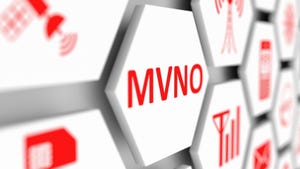Dutch operators clear first LTE hurdle, but impact on customers is limited
The month of May has brought a spate of LTE launches in the Netherlands, as telecoms operators scrambled to meet the coverage obligation deadline for the 2.6GHz spectrum they all bought two years ago. Cable operator Ziggo was the first, followed by the incumbent, KPN, and the rest have now followed suit, with T-Mobile the latest to announce its launch.
May 16, 2012
By Francesco Radicati
The month of May has brought a spate of LTE launches in the Netherlands, as telecoms operators scrambled to meet the coverage obligation deadline for the 2.6GHz spectrum they all bought two years ago. Cable operator Ziggo was the first, followed by the incumbent, KPN, and the rest have now followed suit, with T-Mobile the latest to announce its launch.
For the moment, however, Dutch customers wanting faster mobile broadband are likely to be disappointed. Not only are most of the tariffs for business customers only, but the coverage, for now, is extremely limited – Ziggo’s offering is only available in three cities, KPN’s in five, and Vodafone’s LTE offering is currently limited to the city of Eindhoven.
In fairness, the first requirement was that each network must cover 80 square kilometres by the beginning of May, which they all appear to have met. But on closer inspection they don’t all seem to be the best deal.
For example, to get LTE from Ziggo, one must already be on the operator’s Internet Plus cable broadband subscription; again, fair enough, except that Ziggo isn’t providing the equipment itself. Users who want the tariff have to find their own 4G-compatible smartphone, dongle or tablet somewhere – probably Germany (it turns out Amazon.de delivers to the Netherlands and Belgium).
KPN, by contrast, does sell 4G dongles and SIM cards through its online shop. However, the service costs €67.50 per month, or €17.50 more than KPN’s top mobile broadband bundle, and users get a monthly data allowance of 8GB. Compare that with the 40GB per month that Telia Sweden offers consumers, for around €45. Or, closer to home, the 10GB that Vodafone is offering for €50 per month (with €180 charge for the modem and €10 one-off activation fee).
Of course, it isn��’t completely fair to compare these initial offerings with those in countries, like Sweden, that have had LTE networks for a year or more. Sweden is a special case in that the existing 3G network infrastructure is so strong that the operators initially had trouble convincing consumers to take on 4G. By contrast most Dutch operators haven’t even introduced HSPA+ yet; KPN’s tactic seems to be to offload power users onto wi-fi networks. This isn’t a tactic that will hold up well, as customers demand more bandwidth to surf the web, stream videos, and generally do all the things their new smartphones and tablets are promising.
The sideshow ahead of the main event
The Dutch operators may have rolled out some 4G service in limited areas to satisfy the coverage requirements, but what they’re waiting for is the spectrum auction scheduled for later this year, which will dispose of the 800MHz, 900MHz and 1800MHz bands. Given that the regulator, OPTA, has reserved a certain amount of spectrum in the 800MHz and 900MHz bands for new entrants, and the entire 800MHz band is up for grabs, no operator will want to make any big LTE plans until they know what they have. As a result, it’s unlikely that Dutch consumers will see a nationwide network before 2014.
In the meantime, we’re getting a preview of how the market is likely to look after the auction: while the likes of KPN and Ziggo target business customers, Tele2 is taking the more disruptive route and offering LTE to consumers, at the lower price point of €30 for 3GB of data per month. If Tele2 does win sufficient spectrum in the fall, this is likely to give it a head start in rolling out LTE nationwide.
Read more about:
DiscussionYou May Also Like








.png?width=300&auto=webp&quality=80&disable=upscale)


_1.jpg?width=300&auto=webp&quality=80&disable=upscale)